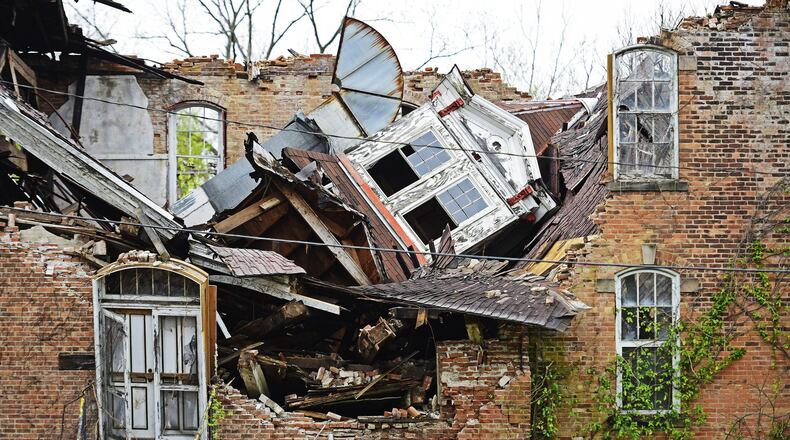Rokakis said the remaining $106 million in demolition and $262 million for brownfields will be disbursed “first come first served.” He said those numbers are probably a little low because he expects some counties won’t take all of their automatic payments. He said they were able to convince the legislature this is a huge problem.
“We had plenty of examples of blight, large industrial, small commercial blighted properties all over the state,” Rokakis said. “We estimate the number to be about 100,000,000-square feet so this money will be very helpful, I mean it’s a multi-billion-dollar problem.”
Rokakis said land banks around the state are already preparing pitches to get a slice of the rest of the money. The Butler County Land Bank has had staffing issues since former director Kathy Dudley left at the end of last year when the job was eliminated. Butler County Treasurer Nancy Nix, who leads the land bank board, told the Journal-News they will be able to compete.
“There are a lot of unknowns at this point, as to award amounts and parameters for usage for blight demolition,” Nix said. “However, now that the county knows there is an opportunity for more funding, we will be ramping up internally with appropriate staffing, planning/coordinating with cities and townships, and acquiring the eligible properties for the pipeline.”
The commissioners last year decided to once again combine management of the land bank and port authority and sought a new director. The land bank has business slowed considerably with the close out of the final federal grant last year. The county has spent about $7.4 million in state and federal money tearing down approximately 750 eyesores since 2012.
The land bank still had revenue coming in from a slice of delinquent tax and assessment collection funds (DTAC). The commissioners agreed to siphon 1 percent of DTAC funds, which are late payment penalties on real estate taxes, in 2014, which opened up land bank services to the rest of the county. The land bank account balance was $950,184 as of July 31.
Nix said she rehired Dudley part-time in March to help the land bank’s attorney. The commissioners hired development specialist Seth Geisler in June and the land bank was part of his responsibilities. The land bank board is expected to name him the new executive director today.
County Administrator Judi Boyko told the Journal-News the land bank’s success has always depended on intergovernmental cooperation and this new funding source will require the same joint effort.
“The county incorporated the communities needs into our platform for projects and programs within the funding sources,” Boyko said. “But we expected the cities and the townships to really man and manage their own programs and projects... That model is still being sustained, we’re still using that model, it’s just that the funding source has changed.”
A 500 percent leap from about 500 to 3,000 foreclosures between 1999 and 2010 prompted the establishment of the land bank in Butler County. In the beginning only the two largest cities, Hamilton and Middletown were members of the land bank because they provided $1.1 million each in order to collect the Moving Ohio Forward monies.
Dudley told the Journal-News while the regulations for the new money are still being finalized, they know they can use it for both residential and commercial projects and they have been meeting with the jurisdictions to build a pipeline of projects so they are ready to go when the guidelines are released.
She said the $1.5 million will be utilized first, before they compete for the larger pot of money. She said they are presenting the land bank board with some future goals and guidelines for the funding.
“There has always been a match in the past and Hamilton and Middletown have been able to do that, there are some townships, villages who have not been able to do that,” Dudley said. “I think with our fiscal conservatism with DTAC, we’re going to be trying to incorporate more townships in the use of the tools of the land bank.”
About the Author

